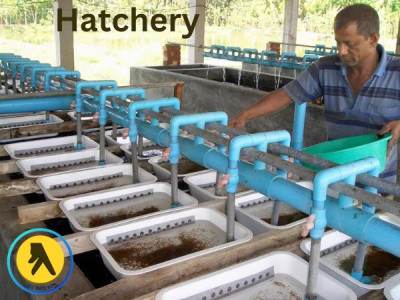All Hatchery Details

Fishtech Hatchery Ltd
House-02, Road -07, Sector-05, Uttara, Dhaka -1230
One of the few hatcheries in Bangladesh with a strong market reputation since 2010 and a commitment to preserving the quality of the tilapia seeds is FISHTECH HATCHERY LTD. Every year, the hatchery produces and distributes about 100 million tilapia fry across the nation. Including the hatchery building, larval raising ponds, nur...
...show moreOpen: 08:00 am
Close: 10:00 pm

Top Hatchery In Bangladesh
Several species of eggs are nurtured and cared for at a hatchery until they hatch. Eggs from chickens, fish, reptiles, and other animals can fall under this category. Breeding and growing animals for commerce or conservation is frequently done at hatcheries. A few hatcheries also function as research centers.
Bangladeshi hatchery
In Bangladesh, there are several hatcheries with a main emphasis on raising chickens and fish. Due to their contribution to boosting these industries' production and efficiency, these hatcheries play a significant role in the nation's agricultural economy.
In Bangladesh, poultry hatcheries generally hatch eggs from chickens, ducks, and geese. They may also give farmers feed and other supplies. On the other side, fish hatcheries concentrate on rearing young fish for commercial or recreational fishing and hatching fish eggs.
In Bangladesh, there are also a few private fish hatcheries that hatch and raise a variety of fish species, including tilapia, pangas, catla, and mrigal, among others. The output of fish in the country is also significantly influenced by these private hatcheries.
Overall, Bangladesh's hatcheries play a significant role in the economic development of the nation by giving the populace a sustainable supply of protein and creating cash for farmers and business owners.
Hatchery equipment
The tools used in a hatchery to incubate and care for eggs until they hatch are referred to as "hatchery machines." Depending on the species being grown and the unique requirements of the hatchery, these machines may contain a range of various types of machinery.
Hatchery equipment examples include:
Eggs are incubated in incubators at predetermined temperatures and humidity levels. The incubator maintains the ideal conditions for hatching while the eggs are put on trays, or hatchery racks.
Hatcheries: These are used after the eggs have hatched and are comparable to incubators. The hatcher keeps the conditions favorable for the development of the fry. Young chicks and other hatchlings are heated and illuminated in brooders. In hen hatcheries, they are frequently employed. The water used in the hatchery is filtered and cleaned using water treatment equipment.
Automatic feeding devices that automatically administer food to the hatchlings at predetermined intervals are also typical in hatcheries.
Systems for environmental control: These systems are used to regulate the hatchery's temperature, humidity, and other environmental variables.
The particular hatchery equipment employed will vary depending on the species and requirements of the hatchery, but they all play a vital role in preserving the ideal circumstances for the eggs and hatchlings.
A fish hatchery is a facility where fish eggs are incubated and cared for until they hatch. The hatched fish, called fry or fingerlings, are then raised until they are large enough to be released into the wild or sold for commercial or recreational fishing. Fish hatcheries can be used to raise a variety of species, including trout, salmon, bass, catfish, and tilapia. Fish hatcheries typically have several key components, including: Incubation tanks or trays: These are used to incubate the fish eggs until they hatch. The temperature, oxygen levels, and water flow in the tanks are carefully controlled to ensure optimal conditions for hatching. Rearing tanks: Once the fry have hatched, they are transferred to rearing tanks where they are raised until they are large enough to be released into the wild or sold. The tanks are designed to mimic the natural habitat of the fish. Feeding systems: Fish hatcheries often have automated feeding systems that dispense food to the fry at regular intervals. Water treatment systems: Hatcheries typically have systems in place to treat and recycle the water used in the tanks, in order to maintain optimal water quality and reduce the need for freshwater inputs. Fish hatcheries play a vital role in fisheries management, conservation and aquaculture industry. They help to supplement wild fish populations, produce fish for stocking recreational fisheries, and provide a sustainable source of fish for human consumption.
No Review